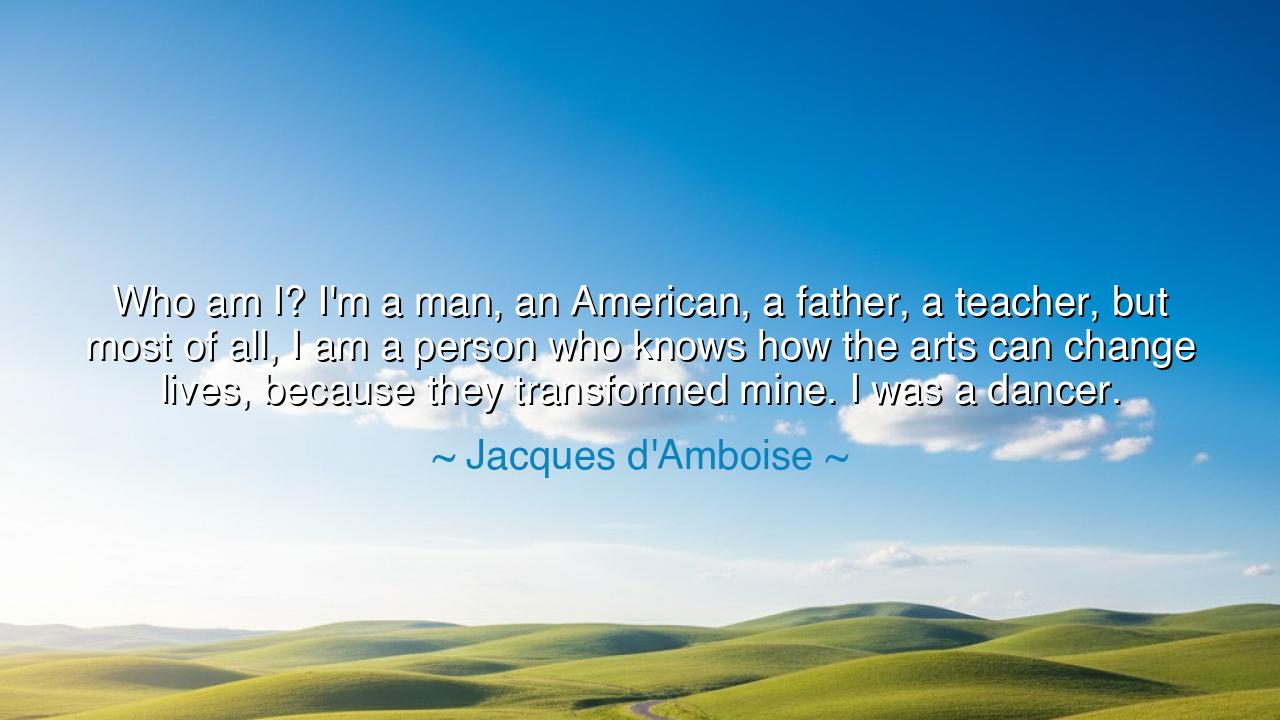
Who am I? I'm a man, an American, a father, a teacher, but most
Who am I? I'm a man, an American, a father, a teacher, but most of all, I am a person who knows how the arts can change lives, because they transformed mine. I was a dancer.






Hear the voice of Jacques d’Amboise, dancer and teacher, who declared: “Who am I? I’m a man, an American, a father, a teacher, but most of all, I am a person who knows how the arts can change lives, because they transformed mine. I was a dancer.” This is not a boast, but a testimony. In these words we hear the cry of one who has known struggle, who has been shaped by the power of beauty, and who stands as witness to the truth that art is no ornament, but a force of transformation.
In the ancient world, to ask “Who am I?” was to confront the deepest mysteries of existence. The Greeks inscribed upon Apollo’s temple at Delphi: Know thyself. D’Amboise answers this eternal question not with titles of pride or power, but with roles of service—father, teacher—and with the confession of one whose life was remade by the arts. His identity is not in wealth, nor in conquest, but in the redemptive force of dance, which lifted him beyond the ordinary and gave his life purpose.
The arts are not idle amusements. They are bridges between the visible and the invisible, between body and spirit. D’Amboise was a dancer, and through movement he discovered freedom, discipline, and truth. Where others might see only performance, he found transformation. This is the hidden power of art—it does not merely entertain; it reshapes the soul. And when a soul is reshaped, so too is a family, a community, a nation.
Consider the story of Mikhail Baryshnikov, who defected from the Soviet Union, carrying with him not gold or arms, but the art of dance. Through his body’s movement, he became a voice for freedom and individuality in a world burdened by control. Like D’Amboise, he bore witness that the arts are not fragile things—they are weapons of the spirit, capable of breaking chains, of lifting the downtrodden, of showing what it means to be fully alive.
In this saying, D’Amboise also reminds us that the arts do not stand apart from life; they dwell within it. He was not only a dancer, but also a man, an American, a father, a teacher. Art did not remove him from these duties—it deepened them. It made him a better father by teaching empathy, a better teacher by teaching patience, a better man by teaching humility. The lesson is clear: when the arts transform an individual, they ripple outward into every role that person holds.
The meaning for us is profound. Too often the arts are dismissed as luxury, as something for leisure or decoration. But those who have been transformed know otherwise. The arts awaken discipline in the undisciplined, courage in the timid, voice in the voiceless. They are not separate from life, but central to it. To nurture art is to nurture humanity itself.
The lesson is this: seek the arts, not as a pastime but as a path. Let them teach you, whether through painting, music, writing, or dance. And honor those who bring art to others, for they are healers of the soul. Parents, give your children access to music and movement. Teachers, weave creativity into your lessons. Citizens, defend the place of art in society, for without it, a people may have wealth and power, but they will lack soul.
So let the words of Jacques d’Amboise be remembered: “Most of all, I am one who knows how the arts can change lives, for they transformed mine. I was a dancer.” Carry this truth with you: that the measure of a life is not only in what we achieve, but in what transforms us, and in how we use that transformation to uplift others. For when art reshapes a single soul, it plants a seed that may one day transform the world.






AAdministratorAdministrator
Welcome, honored guests. Please leave a comment, we will respond soon